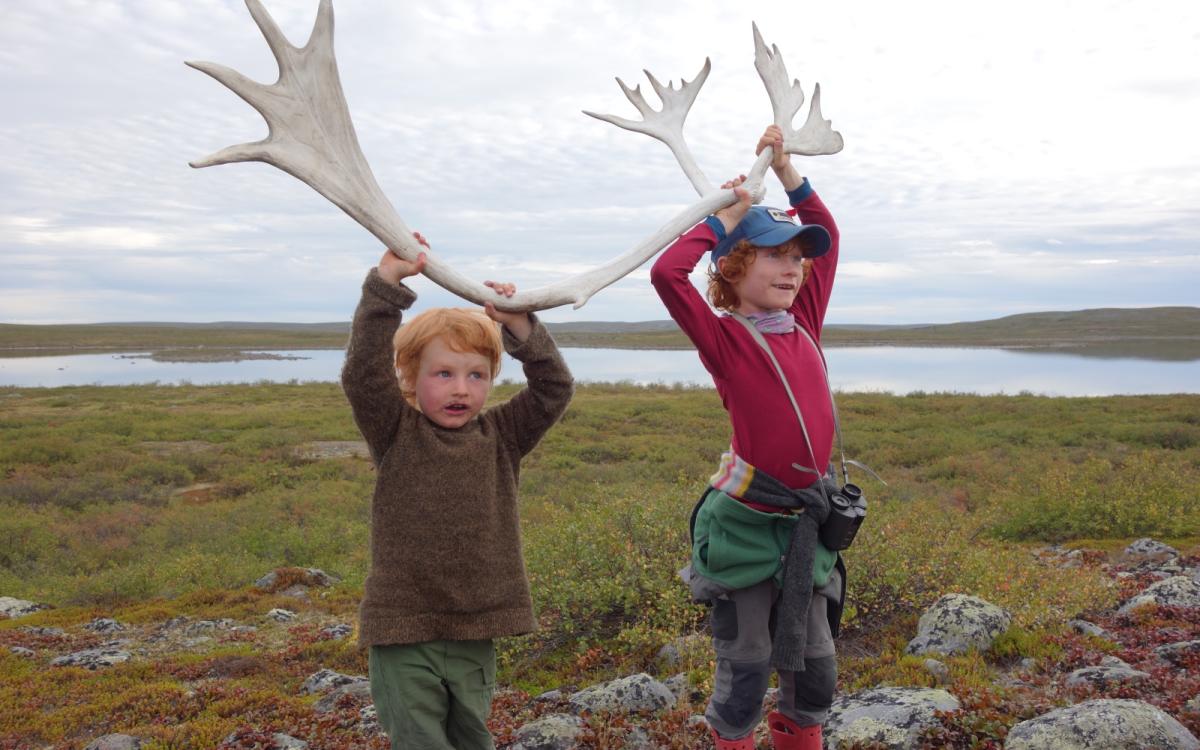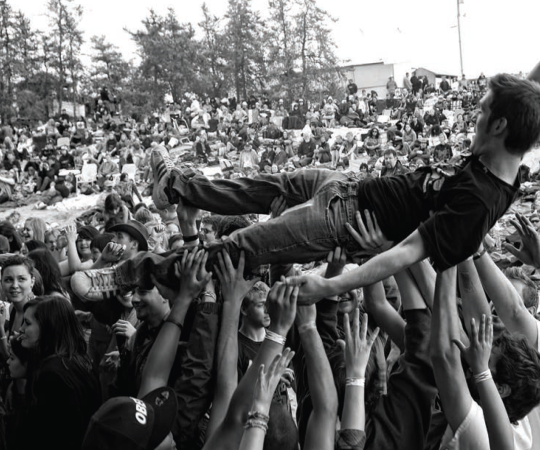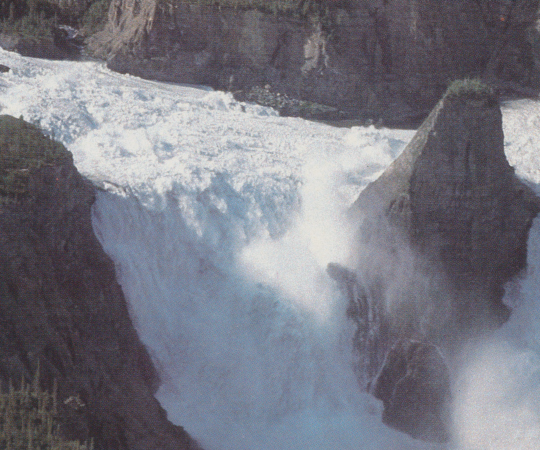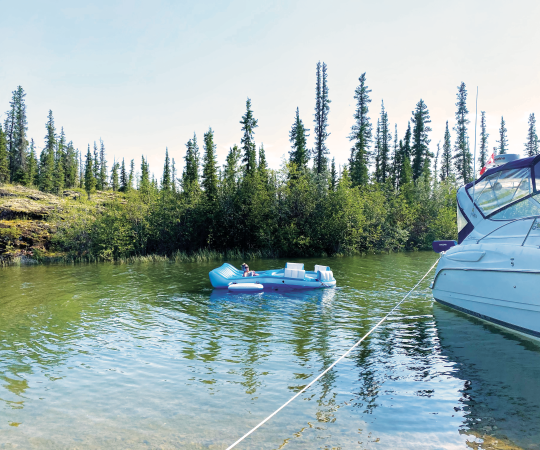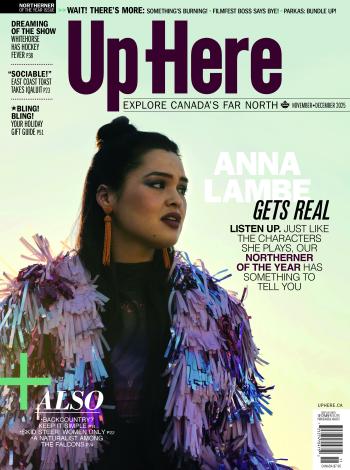I’m baking a fish on a hot rock for breakfast when I spot an object moving on the lake, more than a kilometre away. It’s too big to be a beaver or a duck. I dig in my day bag, grab my monocular and grin—it’s a young caribou swimming across the lake. I shout to alert the others and pass off the monocular. We’ve only seen a few lone caribou this summer. Every sighting is precious.
My spouse Leanne, our two boys, and I are on the tundra in late August. It’s day 77 of a canoe trip that began in the NWT community of Behchokǫ̀. Emile, 7, and Aleksi, 4, are already polished canoeists: they spend between three weeks and three months every summer paddling with us. Nonetheless, this is Aleksi’s first trip walking the portages instead of being carried, and he’s frequently disgruntled. Two friends, Miriam and Myra, have joined us for the last month. Together, we wander the tundra, eat trout and berries, and, today spot caribou.
For breakfast, I serve dark red trout with fresh wild cranberry sauce—a heavenly combination. A canoe trip needs no other justification than eating fresh fish every day, filleted and laid skin-down on a hot rock over a fire minutes after being caught. Still, we have journeyed this far north with the slim hope of glimpsing one of the world’s mightiest migrations.
We take down the tents, load the canoes, and continue paddling northeast under a blue sky. We’re on Deèzàatì (Point Lake), some 45 kilometres from Nunavut. The caribou are somewhere north of us, slowly venturing south towards the tree line. In recent years, they haven’t come this far south until late September. Still, we’re hopeful. And, it turns out, lucky.
While paddling in the afternoon, we see a group of five caribou. Then, as we near the river that flows from Itchen Lake, we spot a group of 14 cows, calves, and yearlings. Jackpot! We stop to watch until the cold and intensifying north wind tickles our bones. We make camp in the lee of a low esker beside the river.
Later in the evening, our meal of trout baked on a bed of rice in our aluminum Dutch oven is interrupted by four-legged visitors. We’ve chanced upon the fall migration of the Bluenose East caribou herd, which once numbered more than 120,000 but now stands around 23,000. Small groups pass by three to 10 at a time. There are nearly as many calves as cows, filling us with optimism that perhaps the precipitous population decline might end. We speculate that the caribou may have come south this early because the tundra’s been bug-free since late July. This incredibly rare event leaves us pondering if there’s been a black fly pandemic. Typically, bug jackets are daily attire on the tundra, but we’ve gone 30 days without them.
With no bugs, the caribou can focus on eating, instead of running into the wind. We remain at this camp two more nights. Streams of caribou pass by. Calves suckle; cows and bulls feed. They’re putting on weight for winter. Perhaps there will be lots of calves next year too, we think.
In this tundra Serengeti, a bull moose walks along the esker 50 feet from camp, turns, and meanders down to swim the river. We’re still watching the moose eat willows on an island in the river when three huge bull caribou nearly walk into our camp before noticing us. They pause to watch us—as curious caribou often do—before making a wide circle around. We are mesmerized and watch in silence. The tundra is alive.
Emile and Aleksi had never seen a live caribou before this trip. Emile declares this the best day of his life. Our hearts melt. I sit in the fading light on the esker to watch a group of 10 swimming caribou. Leanne watches from the tent, and soon spots a cow and calf silhouetted against the twilight sky, only 10 feet behind me. I’d been so focused and quiet that they hadn’t noticed me. They bounce away before I can turn to see them.
On the highest of spirits, we bid farewell to the caribou and veer slowly southwest to where we’ll soon catch a plane home. A couple days later, we discover a gem of a campsite near an esker that trails away from the lake. A small stream, inches deep with miniature rapids and braided channels, flows through a little flood plain beside the esker. It’s the ultimate playground for Emile and Aleksi. They spend two long afternoons running their toy wooden canoes down the stream from top to bottom. Aleksi is quite upset when we finally decide to leave. “I could spend all summer at that campsite,” he laments.
I ask Emile if he’s tired of canoeing. With some hesitation, he replies. “I think I’m okay if we go home.” We’ve been canoeing for 90 days.

